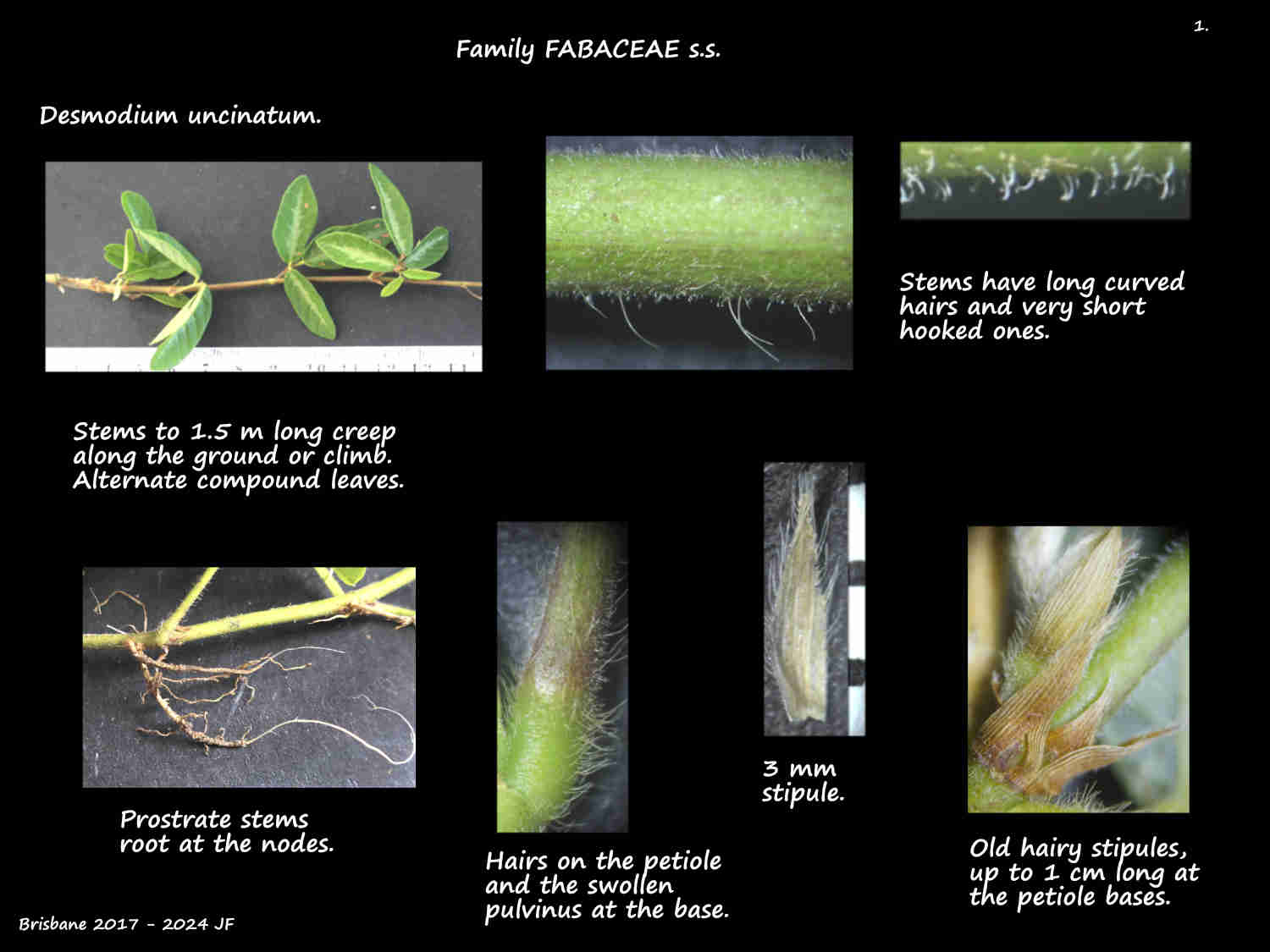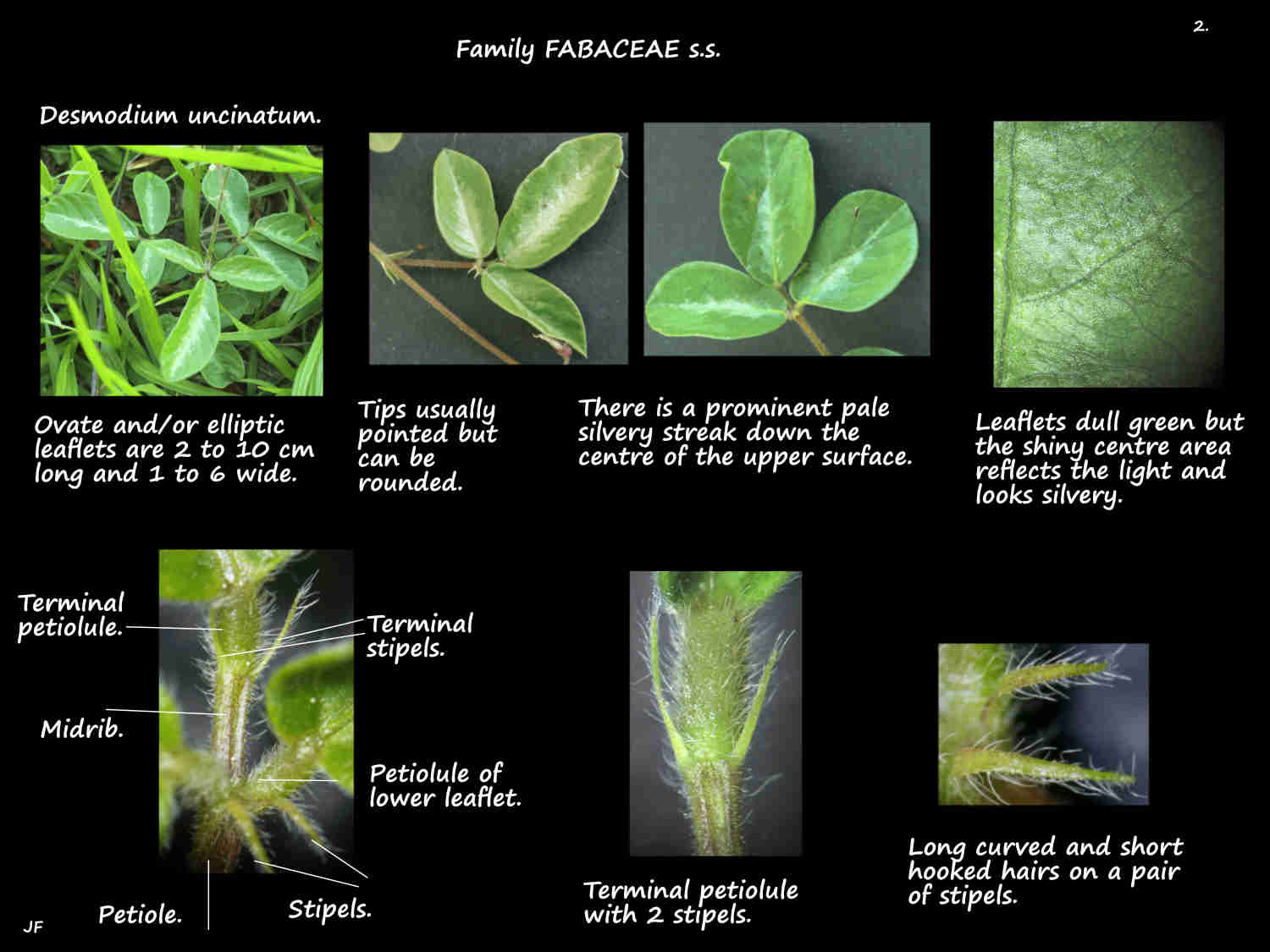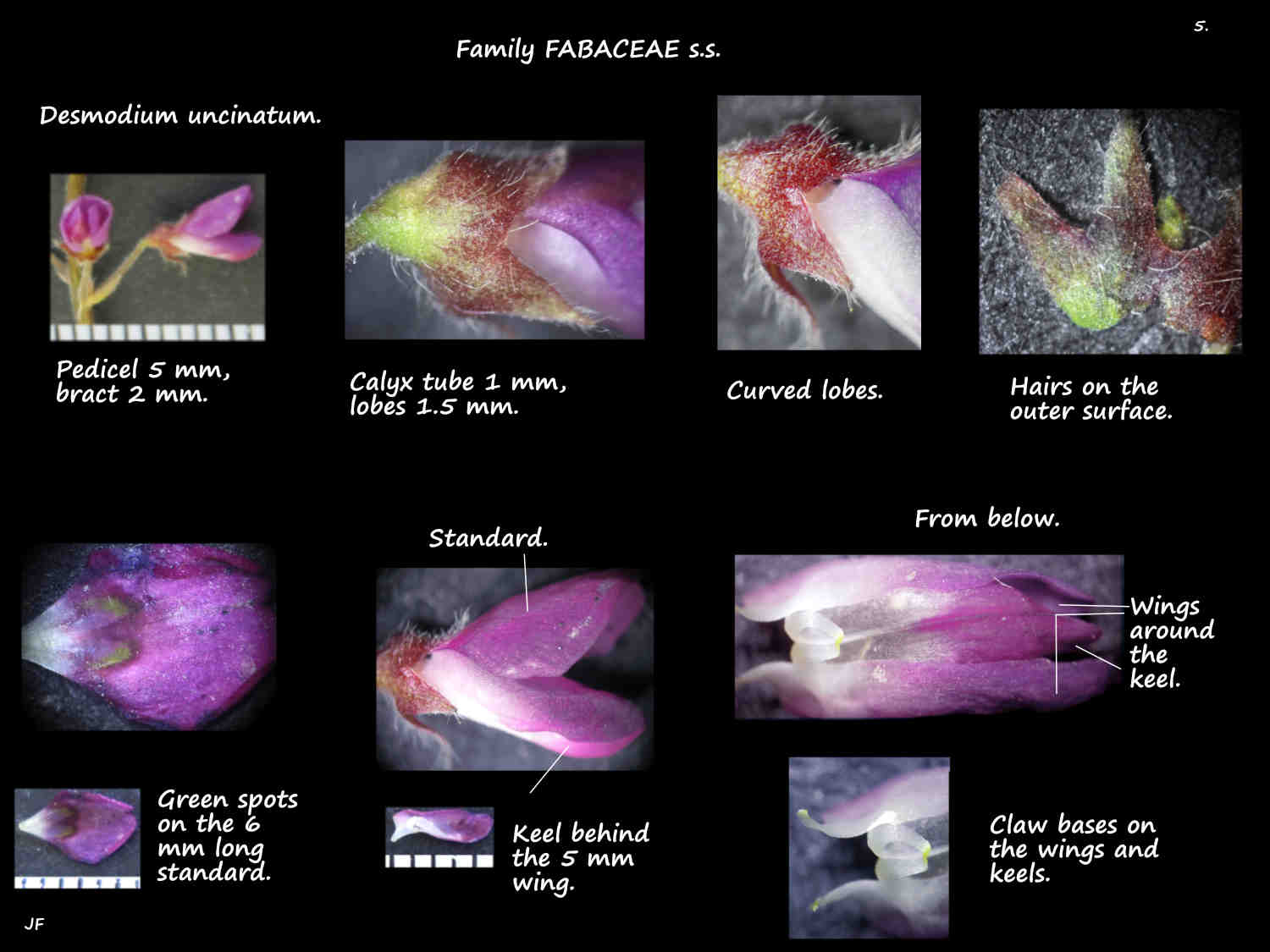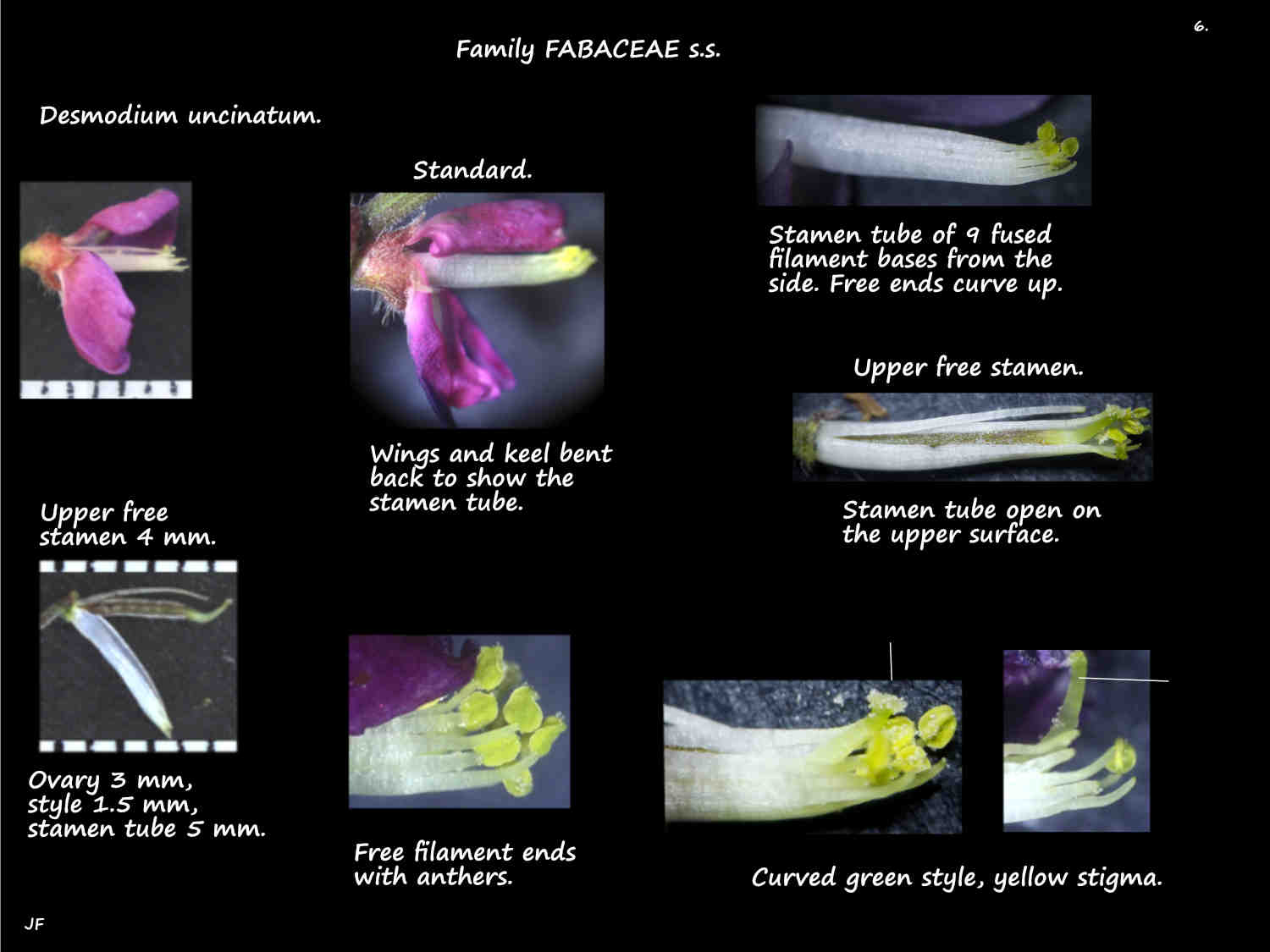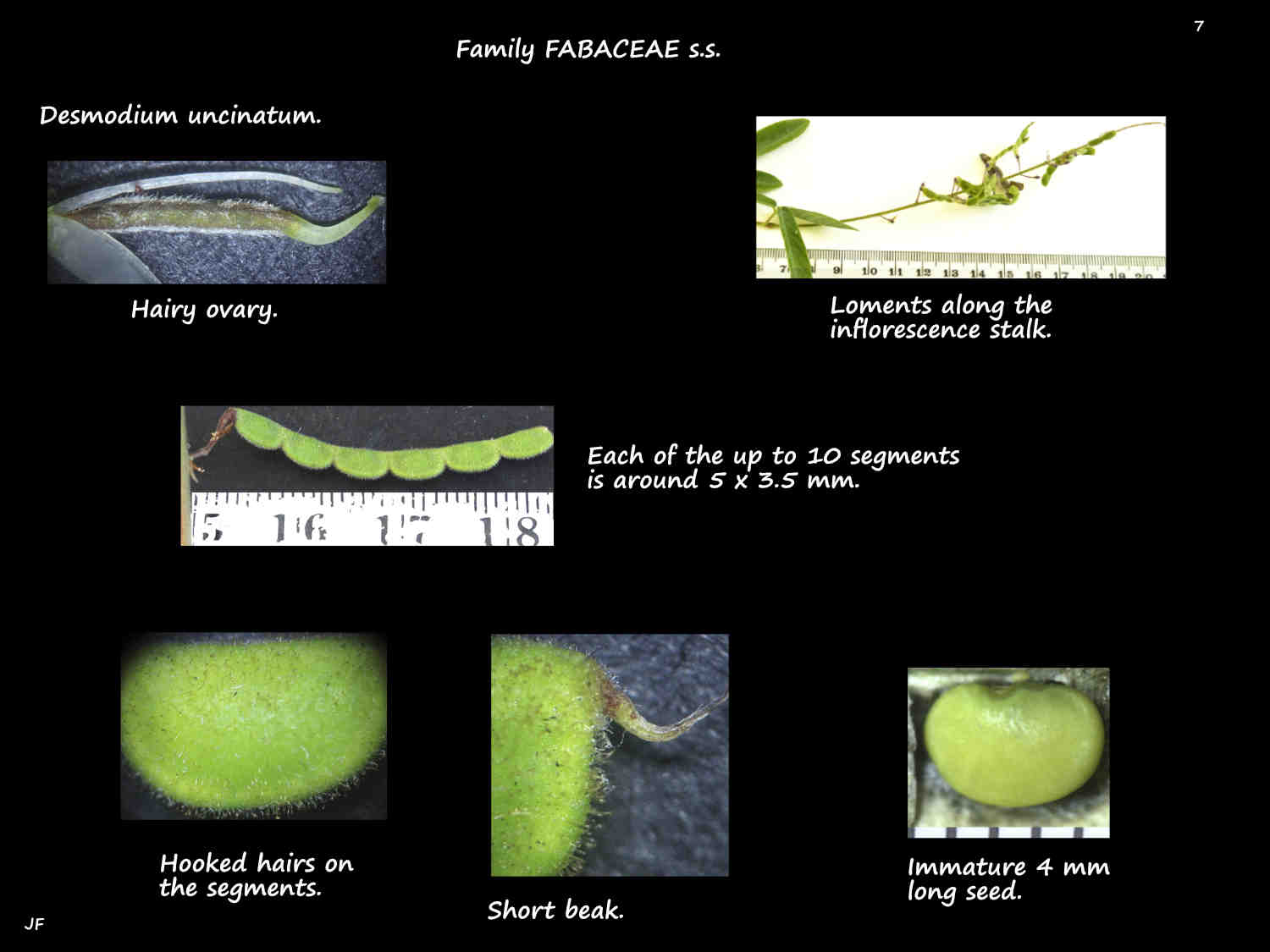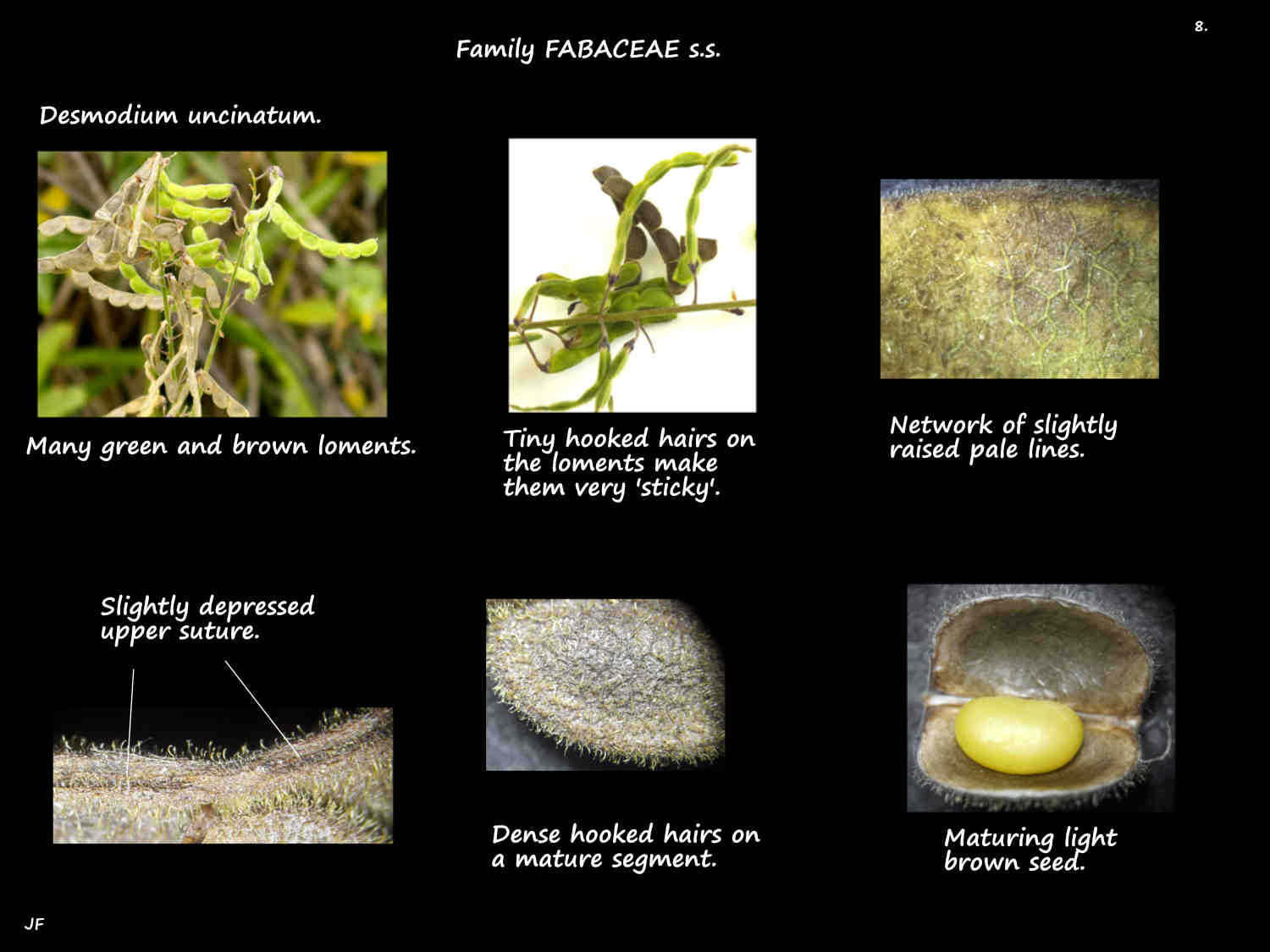Desmodium uncinatum.
The Silver leaf desmodium is from South America.
Widely naturalised in S.E. Queensland it is an environmental weed.
It is a perennial vine that creeps along the ground or scrambles over any support.
It has short erect branches but the prostrate or climbing ones are up to 1.5 m long.
Prostrate stems will root at the nodes.
Stems have curved hairs and tiny hooked ones that give it the name of the Velcro plant.
Hairs on all leaf parts, inflorescence and flower stems and the sepals are similar.
The alternate leaves are on a petiole up to 5 cm long with a pair of stipules at the base.
The hairy petiole and midrib are grooved on the upper surface.
Stipules, around 5 mm long at the petiole base have a pointed tip and hairs.
The blades have 1 pair of opposite leaflets and a larger terminal one.
Leaflets are on a petiolule (stalk) with small hairy stipels at the base.
Leaflets, from 2 to 10 cm long and 1 to 6 cm wide are ovate to elliptic.
They typically have pointed tips but occasionally they are rounded.
The characteristic feature is the prominent pale silvery area down the centre of the upper surface.
Both surfaces have hairs lying flat along the surface and pointing to the leaflet tip.
Inflorescences, up to 30 or 40 cm long are terminal and axillary racemes.
The raceme has flowers, on stalks or pedicels up to 1 cm long with the lower ones opening first.
The small bracts, midrib and pedicels have curved and hooked hairs.
The sepal bases are fused into a green bell-shaped tube with 5 reddish lobes.
There are hairs on the outer surface and the lobes curve outwards.
The typical pea-shaped flowers, with 5 petals are up to 10 mm long.
The upper standard petal is bent up at a right angle across the middle.
The horizontal base is white and the erect roundish pink to purplish section has 2 green areas at the base.
The 2 wing petals are free of, and around the same length as the lower keel petals.
The keel petals are fused along the lower edges and folded up.
Wings and keels have narrow claw bases.
As flowers age they become more bluish.
Nine of the 10 stamens are fused into a tube open along the top with the tenth or upper stamen free.
The tube encloses the elongated ovary with its upward curved style and small stigma.
The fruit is a loment – a pod up to 3 cm long with up to 10 distinct segments each with one seed.
The sightly curved pods mature from green to brown.
The ovary and loment are covered in hooked hairs.
J.F.
